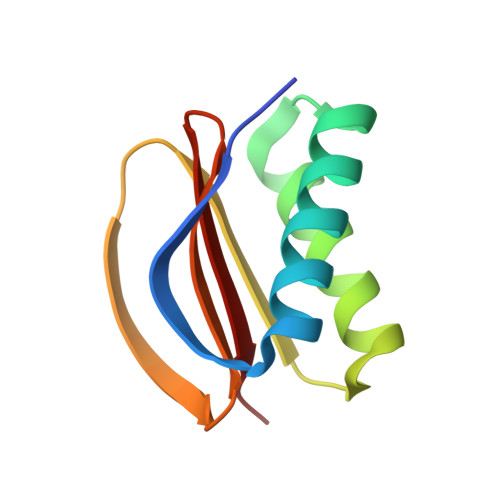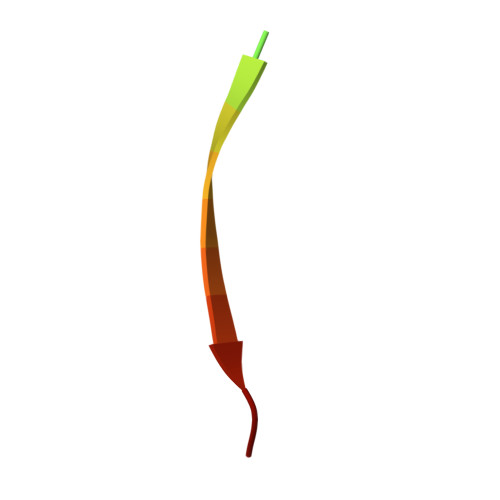The interplay of ligand binding and quaternary structure in the diverse interactions of dynein light chain LC8.
Benison, G., Karplus, P.A., Barbar, E.(2008) J Mol Biol 384: 954-966
- PubMed: 18948118
- DOI: https://doi.org/10.1016/j.jmb.2008.09.083
- Primary Citation of Related Structures:
3BRI, 3E2B - PubMed Abstract:
Dynein light chain LC8 is a small, dimeric, and very highly conserved globular protein that is an integral part of the dynein and myosin molecular motors but appears to have a broader role in multiple protein complexes unrelated to molecular motors. LC8 binds to two families of targets: those having a KXTQT sequence fingerprint and those having a GIQVD fingerprint. All known LC8 binding partners containing these fingerprints share a common binding site on LC8 that raises the question of what determines binding specificity. Here, we present the crystal structure of apo-LC8 at 1.7-A resolution, which, when compared with the crystal structures of several LC8 complexes, gives insight into the mechanism underlying the binding diversity of LC8. Peptide binding is associated with a shift in quaternary structure that expands the hydrophobic binding surface available to the ligand, in addition to changes in tertiary structure and ordering of LC8 around the binding groove. The observed quaternary shift suggests a mechanism by which binding at one of the two identical sites can influence binding at the other. NMR spectra of titrations with peptides from each fingerprint family show evidence of allosteric interaction between the two binding sites, to a differing degree in the two ligand families. Allosteric interaction between the binding sites may be a mechanism to promote simultaneous binding of ligands from the same family, providing a physiological role for the two fingerprints.
Organizational Affiliation:
Department of Biochemistry and Biophysics, Oregon State University, Corvallis, OR 97331, USA.
















